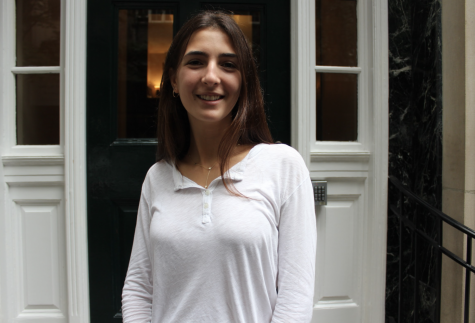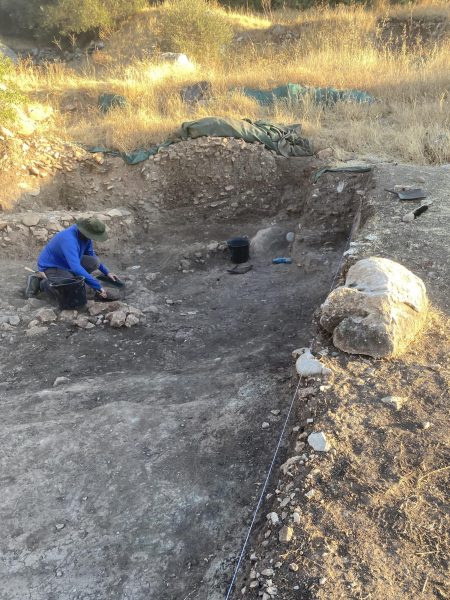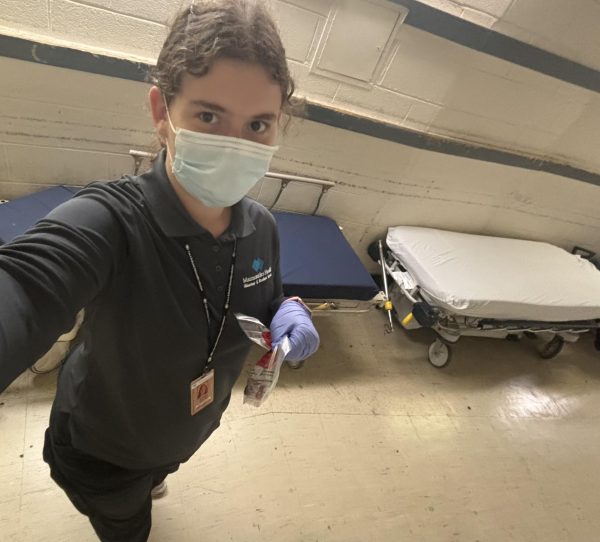October SFAC meeting
The Student Faculty Administration Committee (SFAC), composed of members of the G.O., student class presidents, grade coordinators and other faculty members, meets monthly to discuss current concerns within the school and to propose ways to resolve them. The administration encourages students to dress up, and after each meeting, students and faculty members volunteer to take on “follow ups” to make sure that the changes are made.
This month’s meeting, held on October 10, began with a discussion about the school’s dress code. Last school year, an increasing number of students failed to abide by the school’s policy of wearing a collared shirt with a sweater or tie for boys and skirts to knee for girls.
Advocates for keeping the status quo claimed that Ramaz’s dress code should remain formal, pointing out that while the dress code did not explicitly advise against it, students were taking on a more casual approach of wearing sweatshirts with large logos not appropriate for a learning atmosphere. Last year, in a SFAC meeting, some even advocated to replace the current dress code with a uniform, believing that if the student body refuses to follow protocol, then protocol must change. This idea was not acted upon. Instead, the administration edited Preludes to specify that students are restricted from wearing “shirts with large writing, pictures, images, symbols or large logos of any kind.” The more stringent guidelines are considered a challenge for many students.
During the discussion, Senior Class President Harry Shams ’19 mentioned that seniors have a desire to show pride for the universities they apply to, and that the new school dress code prevents them from doing so. Another issue that both Shams and Ayelet Monas ’19 (AVP of Operations) presented was that since the school didn’t release Preludes until mid-August, many students bought clothes during the summer when they were not aware of the new rule. They argued that students shouldn’t have to spend money or time buying a second wardrobe. Rabbi Slomnicki responded to these complaints by saying “I do not see the rule being changed this year. We are trying to get the student body to understand that a more dignified, presentable public appearance of the students is important. We are trying to communicate through the dress code what we think is important.”
The next topic presented was the new addition of the Ashkenaz junior-senior shacharit minyan, a highly controversial issue. Many feel that it is creates a more meaningful tefila experience to have the upperclassman joined together each morning, while others consider the joined grade minyan to be crowded. In the past, seniors have had the privilege of having their own minyan in the beit knesset and some feel deprived of that opportunity. Even though he is Sephardi, Harry Shams still felt that the joint minyan was a way to “make changes for change’s sake.”
According to various administrators at the meeting, there were three fundamental reasons for combining the minyanim. Firstly, there was a faculty coverage issue. Secondly, the two minyanim were under populated. And thirdly, during second semester, the senior minyan dissolves due to the seniors only having class during the afternoon and work study.
The final issue discussed at SFAC was the library. There have been tremendous changes this year in the library, including no longer having a librarian, removing a large antiquated office desk to create more space for study tables, and removing half of the computers while updating the remaining ones. Gabi Potter ’20, Junior Class President, said “I have noticed that because there are less computers in the library, students have to share computer time which makes it complicated to get their work done or print documents.” Potter also pointed out that since Ms. Scudera’s departure, “students don’t know who to ask for help with the printer because they are not sure who is in charge of it.” Multiple suggestions were made, including a printing room that would be separate from the library, removing some of the book racks to make space for additional computers, or creating a comfortable seating area where students could work on borrowed ChromeBooks.
The issue of students who do not have laptops or do not bring their laptops to school was also addressed. G.O. President Becky Tauber ’19 suggested, “Maybe we could have a system where, just like books, you could sign out computers to use for the day in the school. This would solve the problem of not enough computers in the library to do work on, and it also solves the problem of students who do not want to bring their computer to school if they only need it for one or two periods.”
Some of these requests were immediately acted on, and the following day, the printer was working. All in all, October’s SFAC meeting was very productive and students should look forward to seeing positive changes in the school environment.

Sophia Kremer started writing for the Rampage as a freshman covering orientation and now serves as Co-Editor-in-Chief. Sophia plans to promote the paper...



